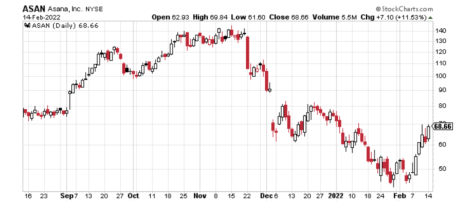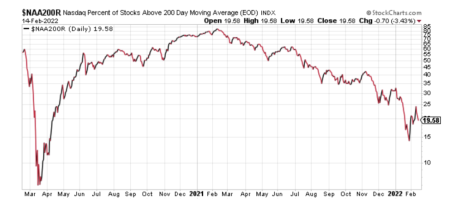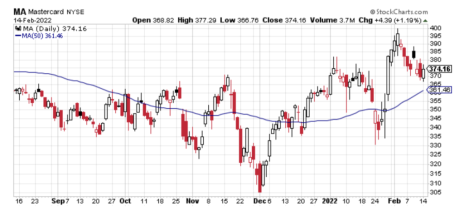During periods of market volatility the “noise” of the market is heightened, and that brings with it more and more aggressive predictions, especially amongst the talking head class. If you see market volatility at very high levels you can’t predict that the market will settle down on its own accord, you have to proclaim that the sky is falling or the greatest bull run of all time is incoming. If you don’t, you won’t attract eyeballs.
To support these predictions, people tend to roll out studies or indicators that conveniently make the same case. They may be eye-catching but they usually don’t offer an actual edge to investors.
One example is insider buying: Obviously, insider buying is a good thing, as the only reason someone buys a stock is if they think it’s headed up. It’s not meaningless.
That said, it’s very much a secondary indicator; what really counts isn’t what one or two insiders think, but whether big, institutional investors think the same thing. If the CEO of company XYZ buys, but Fidelity thinks the stock is worth 30% less, guess what? The stock is headed lower.
This came up again when news leaked that the CEO of Netflix (NFLX) bought $20 million of stock after shares collapsed on earnings. Is it a positive? Sure, no doubt. Does it mean the stock is headed up from here? That’s far less clear.
A good example of this is Asana (ASAN), which was a leading glamour stock during the summer/fall 2021 run in the market—and during that time, the CEO repeatedly bought shares, with entry prices up to 100 over many months. The stock eventually made it to 145 before topping out in November along with most growth stocks.
But as the stock cracked, the CEO bought more—I don’t have a list of all the purchases, but I know he bought more at 100 again … before the stock crashed to the mid-60s on earnings. Then I believe he grabbed more shares in the 50 to 60 area, only to see shares dip under 45 this month … when he bought another slug of stock.
I offer no predictions on ASAN or NFLX from here; after such huge declines, they could certainly bounce, especially if the market continues to rally. But my point is that insider buying (like some other secondary factors) is a gentle breeze at a stock’s back—it’s a plus, but the focus should be on other more important factors like the overall trend, earnings estimates and the like. It’s better putting most of your eggs in those baskets than reaching for some so-so evidence to justify putting money to work.
A Perspective on Growth Stocks
Now, with that said, I am fairly optimistic that the market has made some improvement. To me, the peak really came in growth stocks in mid-November, with a sharp down leg into mid-December, and after a modest bounce into year-end, things really accelerated lower into the end of January. That looks like the “crash phase” to me—something that wiped out nearly everything in the market and led to some true extremes, including 34% of all Nasdaq issues hitting new lows on a single day (January 24) while just 14% of Nasdaq issues were above their 200-day lines (January 27).
To be fair, at major lows of the past decade, we have seen more extreme readings from these and some other measures, especially when looking at the NYSE. But there’s no doubt a ton of selling was done.
To me, it looks like that January 24 low was the low of that phase—and now, ideally, we’re beginning what I call the “repair phase,” where a lot of the growth stocks that completely cracked can start to repair the damage and set up some buyable patterns down the road. It’s likely to take some time for that to happen given the damage, but I’m looking for the wheat to begin separating from the chaff. All I can really say right here is let’s see how it goes—the farther up we rally, the better the chance that last week’s lows were THE low, but a quick give-back would signal a darker message.
3 Approaches to Today’s Market
In the meantime, if you want to nibble on some things, I see three “themes” to consider.
The first (but one I’d generally stay away from) is simply playing the bounce in the most beaten-down areas. Cloudflare (NET) is a good example—to me, the top is clearly in for a long time, but after falling 65%, it’s possible the stock could rally another 20% to 30% if the market does OK in the near-term. That’s a tough play to me, but it’s not surprising to see the most beaten-down names rally sharply for two to four weeks.
The second “theme” are stocks that have flashed big-volume buying after earnings, and their charts aren’t in terrible shape. MasterCard (MA) isn’t really my kind of name, but there’s no question it looks solid here, with higher lows in January and a string of big gains after earnings in recent days. Earnings are expected to grow 24% both this year and next, too, so it’s not just a defensive, mega-cap stock play.
Finally, the third theme is to look for real strength, and that is mainly found in commodity areas right now. Energy stocks remain in good shape; I still like many explorers, but it’s hard to ignore the proper action seen in something like Halliburton (HAL) right now. I’m also seeing some shippers set up, with a name like StarBulk (SBLK) breaking out of a multi-month base.
Big picture, I think the biggest money will be made down the road when we can get on some fresh growth leaders that begin major sustained advances. But if last week’s lows do hold for a while, some of these areas should at least have a few good weeks going forward.
Do you track insider buying when deciding which stocks to buy? If so, tell us about some of your success stories.






